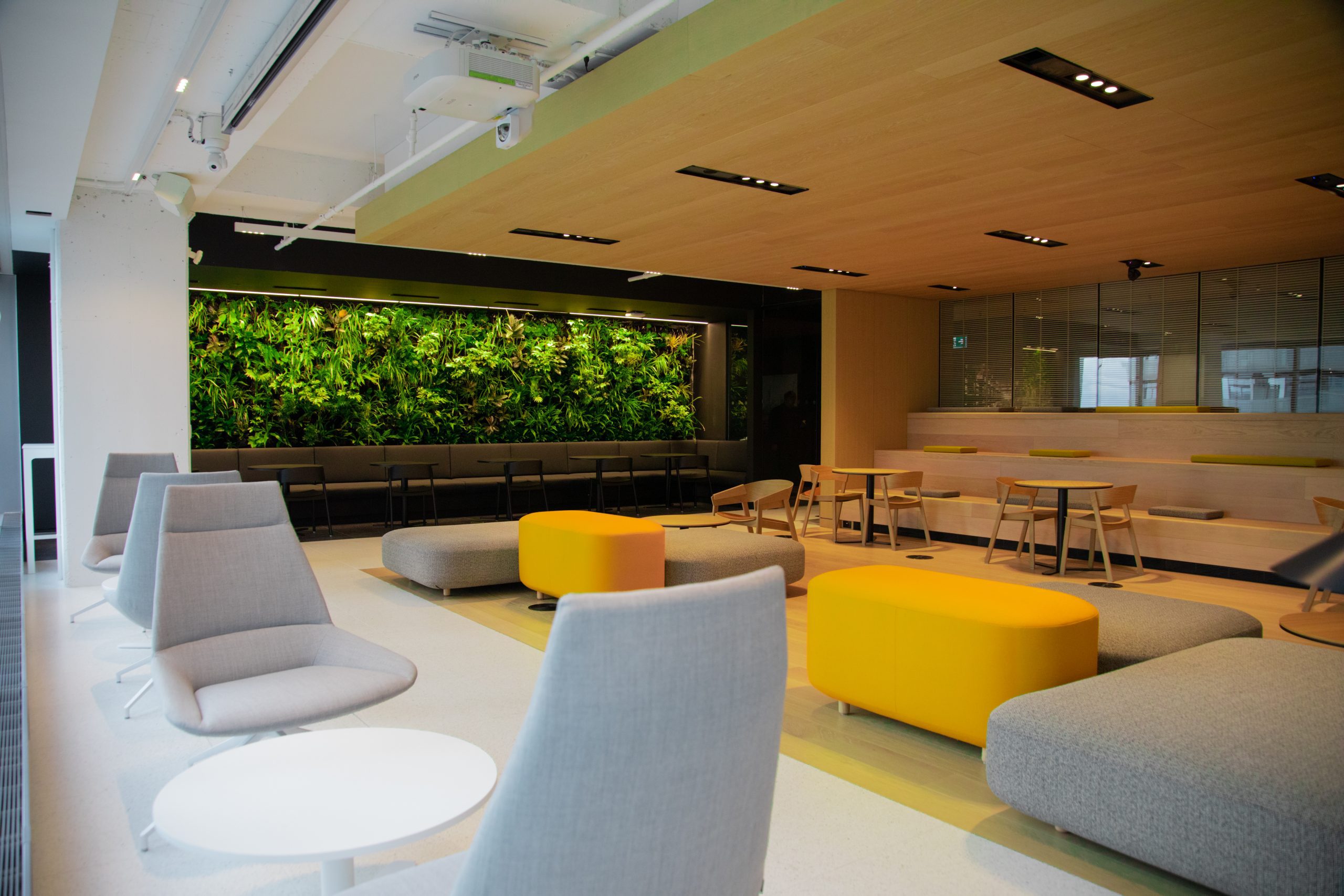More and more often we are seeing building developers and architects prioritize aesthetics and functionality in equal measure. The emergence of the biofilter living wall (BLWs) perfectly reflects this trend in the real estate industry as they are not just vibrant natural features but active air purifiers that harness the power of nature to create a healthier indoor environment. Let’s delve into the science behind biofilters and how BLWs transform these natural processes into a practical solution for improved indoor air quality (IAQ).
What Is Biofiltration?
Biofiltration is a natural process that utilizes living organisms to remove contaminants from air or water. Beneficial microbes act as living filters, breaking down pollutants like volatile organic compounds (VOCs) into harmless byproducts. This technology has been successfully employed in wastewater treatment and is now being adapted for IAQ management within buildings.

Biofilter Living Walls
Imagine being able to breathe forest fresh air while in your office lobby. That’s the essence of a biofilter living wall. Unlike traditional living walls, which focus solely on aesthetics, BLWs are specifically designed for air purification through a unique combination of elements.
Hydroponic Systems: BLWs utilize hydroponics, a method where plants grow in a nutrient-rich water solution instead of soil. This method facilitates more complete and direct access to the contaminated air with the microbes within the root zone. Geoponic, or soil-based systems, cover the root zone with soil, severely inhibiting any air purification capabilities.
Active Airflow: BLWs incorporate a controlled airflow system, either through integrated fans or by connecting to a building’s HVAC system. This system directs polluted air towards the plant root zone where biofiltration occurs. This feature is crucial in designing a BLW system that is effective and efficient at improving indoor air.

Benefits Biofilter Living Walls
The integration of a biofilter living wall offers a multitude of benefits for building occupants and managers alike.
The most obvious benefit is the enhanced indoor air quality. BLWs actively remove pollutants, leading to a cleaner and healthier indoor environment. This can result in reduced respiratory problems, allergies, and improved overall well-being for occupants.
As a result of improved IAQ, BLWs also aid in mitigating Sick Building Syndrome (SBS). Poor IAQ is a major contributor to SBS, which can be characterized by occupants of a building experiencing symptoms like headaches, fatigue, and dizziness. Biofilter living walls help alleviate SBS by improving air quality and creating a more comfortable indoor environment for occupants.
Another significant benefit of BLWs is the potential for energy efficiency gains. Traditional ventilation systems constantly replace indoor air with conditioned outside air, leading to increased ventilation requirements and energy consumption. By actively circulating and effectively cleaning the air that is already indoors, BLWs can reduce reliance on ventilation, potentially lowering energy expenditures and operational costs.
A Sustainable Solution for Indoor Air
Biofilter living walls represent a significant advancement in indoor air management. They offer a sustainable and aesthetically pleasing solution to combat indoor air pollution, promote occupant health, and potentially contribute to energy savings. As research and development progress, BLWs are poised to become a mainstream choice for architects, building owners, and anyone seeking a healthier and more sustainable indoor environment.
